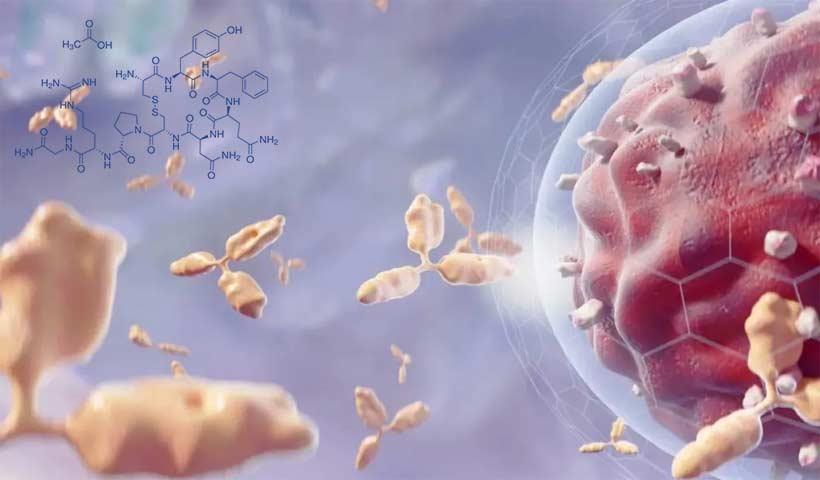Health
Development of Antitumor Carriers and Peptides in 2023

Antitumor Carriers and Peptides: Cancer is one of the most devastating diseases in the world, killing millions of people every year. Humans have made some advances in cancer treatment, such as surgery, radiation therapy, and chemotherapy. Chemotherapy is the use of antineoplastic drugs to destroy cancer cells.
Although chemotherapy treatment is a very effective therapy and is the most commonly used method to treat cancer, its therapeutic effect is often limited by the insolubility and instability of chemotherapeutic drugs, and more importantly, non-specific delivery and difficult access of drugs to tumor sites.
In addition, chemotherapy drugs enter the bloodstream and distribute indiscriminately to all cells of the body, which also damages healthy cells and causes many serious side effects during treatment.
What is an Antineoplastic Drug Carrier?
The benefits of a drug are directly related to the way it is administered or delivered. Drug delivery has a certain influence on drug metabolism, absorption and distribution, and therapeutic effect. Drug carriers that can improve the effective delivery of anti-tumor drugs to tumor sites or improve the bioavailability of anti-tumor drugs in tumor sites have become a research hotspot.
With the rapid development of the field of drug delivery and controlled release, drug carriers that have been studied so far include peptide molecules, hydrogels, from a leading hydrogel manufacturer, liposomes, polymer micelles, carbon nanotubes and graphene oxides, dioxide Silicon and gold nanoparticles, etc.
Peptide as Antineoplastic Drug Carrier
As a nano-carrier of anti-tumor drugs, peptides can modify and encapsulate drugs, and have shown good applications in achieving targeted drug delivery, sustained drug release, improving drug water solubility and bioavailability, and reducing drug side effects. Therefore, it has become one of the research hotspots in the field of pharmacy in recent years.
Peptide is a compound formed by linking α-amino acids with peptide chains. It is also an intermediate product of protein hydrolysis, usually formed by dehydration condensation of 10-100 amino acid molecules. It is widely present in living organisms, and it is a structural fragment of a protein, an active group for a protein to function, and an important substance for the metabolism and regulation of the human body. About the peptides synthesis refer to: www.omizzur.com
Peptide molecular structures are simple, diverse, easy to improve, and relatively stable in nature. They are ideal building blocks for nanodevices, and can be self-assembled into polypeptide nanotubes through intramolecular or intermolecular non-covalent bonds (such as electrostatic interactions and hydrogen bonds). As the carrier material of drugs and genes, peptide molecules have attracted much attention because of their special structure, biocompatibility and targeted penetration.
As a carrier, peptides have the advantages of high transport efficiency, low toxicity, no obvious limit on the size of the carried substances, no inflammatory response, and effective control of the amount of substances entering cells, so they are widely used in the field of drug delivery.
As an ideal drug delivery system, it must be able to transport the drug to a specific site in the body and release the drug at that site. At the same time, the carrier must itself be non-toxic or degrade into non-toxic products and be eliminated from the body. Studies have shown that nanocarrier particles formed by self-assembled polypeptides have advantages that other carriers do not have.
First of all, these peptides have simple sequences and unique mechanisms, which facilitate possible control and research on the research and peptide assembly. Complementary ionic bonds can be formed between the amino acids in the peptides, and the electrostatic force pairs between the ionic bonds form A stable polypeptide membrane that plays a very important role.
Secondly, the study found that in aqueous solution, most of these peptides are rich in β-sheet nanostructures. In the β-sheet arrangement, all the hydrophilic residues of the peptide are arranged on one side, while the hydrophobic residues are arranged on the other side. This unique amphiphilic nature of the peptide allows it to interact with both hydrophilic and hydrophobic molecules. In addition, the immune response of these peptides was difficult to detect after entering the animal body, indicating that they have good biocompatibility.
Nanoparticles as Antitumor Drug Carriers
Ideal antitumor drugs should be able to specifically enter tumor cells. At the same time, some factors, such as the unstable environment in the body and the toxicity caused by high doses, also limit the application of anticancer drugs.
Nanoparticles can be targeted through surface modification or the use of special materials, which is beneficial to the absorption of insoluble drugs and improves the bioavailability of drugs. The therapeutic field has broad application prospects.
Nanoparticles can be prepared by physical, chemical and physicochemical methods, among which physical methods are the most commonly used. According to the different formation mechanisms of nanoparticles, it can be divided into monomer polymerization and polymer material dispersion methods.
Popular nanoparticle drug carriers include polymer micelles, nanoliposomes, mesoporous silica, gold nanoparticles, etc.
Gold nanoparticles (AuNPs)
Gold nanoparticles (AuNPs) are one of the common inorganic nanomaterials, which have the advantages of low toxicity, good biocompatibility, and easy surface functionalization. Due to the special physical, chemical and optical properties of gold nanoparticles, drug carriers modified with gold nanoparticles have been widely used in medical imaging and cancer treatment in recent years.
Summary on Antitumor Carriers and Peptides:
Researchers have carried out a lot of research on drug carrier materials, enriched the types of drug carrier materials, improved their intelligence, and effectively promoted the application of drug carrier materials in antitumor drug therapy.
However, the stability, uniformity, and safety of anti-tumor drug carrier materials need to be further studied in order to further promote the clinical application of anti-tumor drug carrier materials.

















![Play Online Blackjack In Australia [2024]: Top 10 Online Australian Blackjack Sites 16 Play Online Blackjack in Australia [2024]: Top 10 Online Australian Blackjack Sites](https://www.chiangraitimes.com/wp-content/uploads/2024/03/word-image-303235-1-80x80.jpeg)












